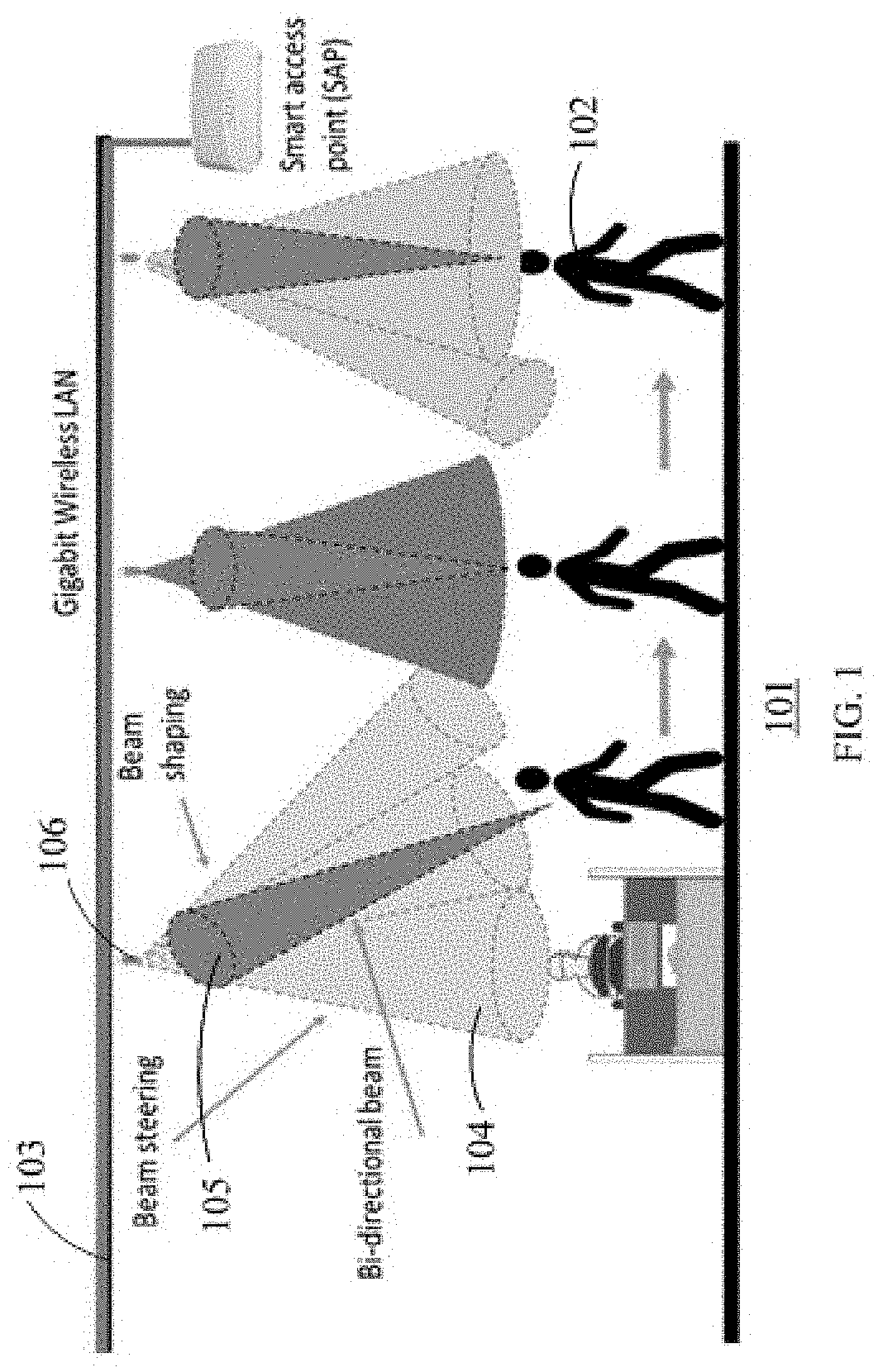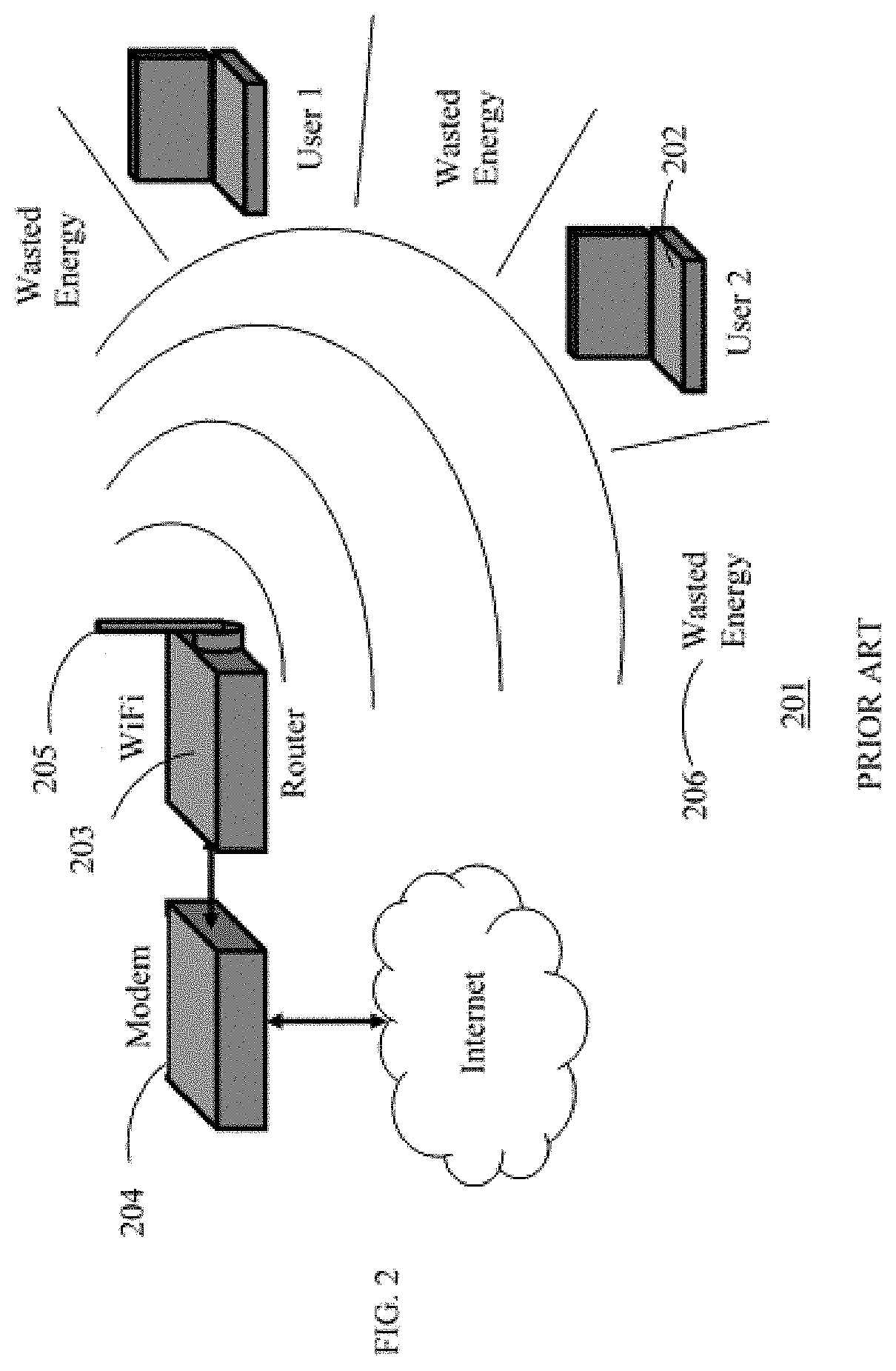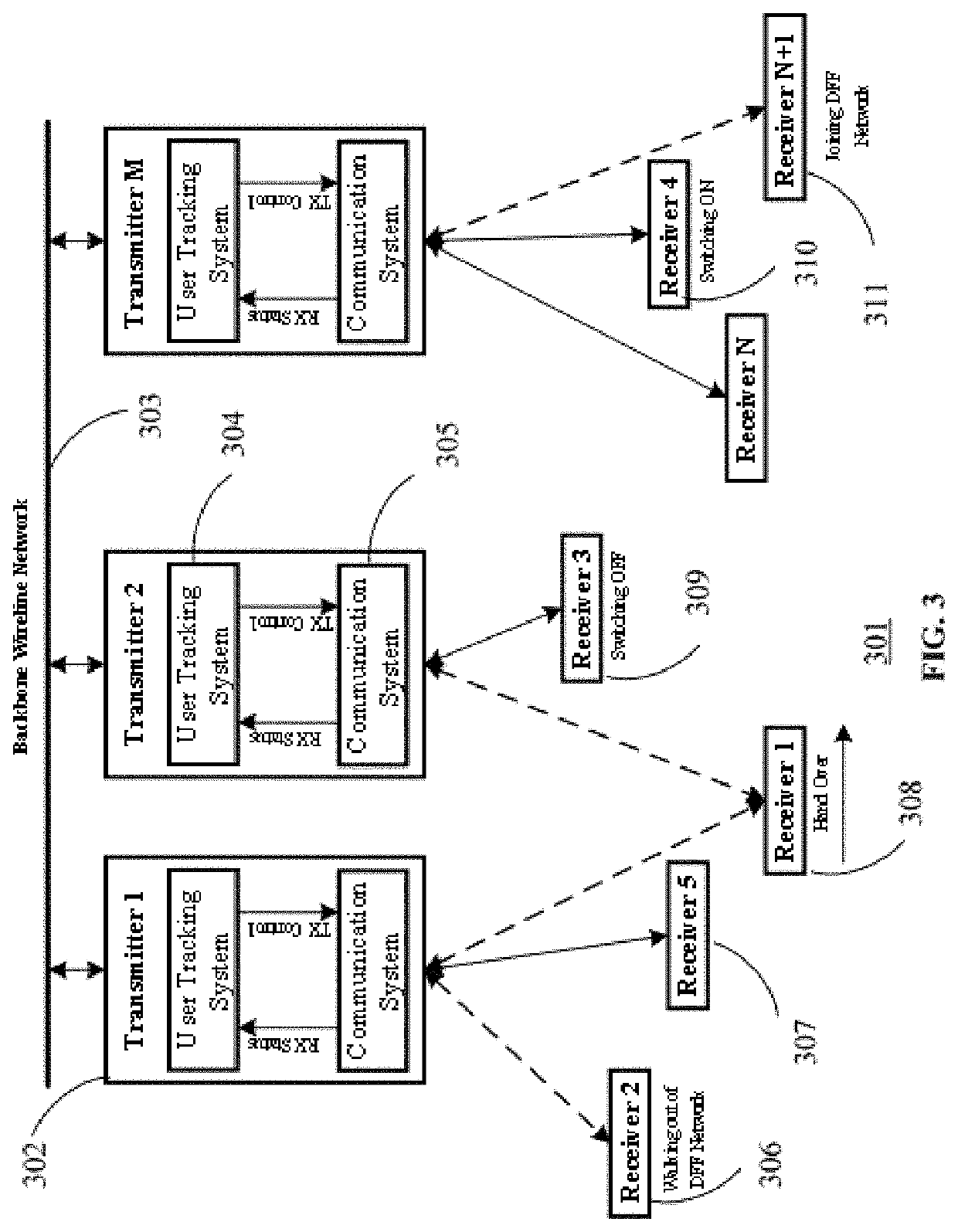Dynamic free-space femto-cells for high speed optical communication
a free-space femtocell and high-speed technology, applied in line-of-sight transmission, electrical apparatus, network topologies, etc., can solve the problems of reducing the efficiency of cable management, reducing and reducing the cost of cable management. , the effect of increasing the burden of cable managemen
- Summary
- Abstract
- Description
- Claims
- Application Information
AI Technical Summary
Benefits of technology
Problems solved by technology
Method used
Image
Examples
Embodiment Construction
[0021]The DFF communication technology is a dynamic communication system with many transmitters and many receivers or users. FIG. 1 shows the high-level schematic of the DFF communication system. Various transmitters (106) receive data through backbone wireline network (103). These data are transmitted to established users (102) using optical beam (104). The users transmit data, including acknowledgement (ACK), back to the transmitter using another optical channel which is omni-directional so that it doesn't need to know the location of the transmitter. Since receiver-to-transmitter (RX-TX) data is low bandwidth, it doesn't need to be directional beam. In the transmitter a high sensitivity avalanche photodiode (APD) is used to detect such signal. This reduces the power required and optical system complexity at the receiver. The communication system as described is still immune to jamming since the RX-TX data is coded with user specific codes established during handshaking such that ...
PUM
 Login to View More
Login to View More Abstract
Description
Claims
Application Information
 Login to View More
Login to View More - R&D
- Intellectual Property
- Life Sciences
- Materials
- Tech Scout
- Unparalleled Data Quality
- Higher Quality Content
- 60% Fewer Hallucinations
Browse by: Latest US Patents, China's latest patents, Technical Efficacy Thesaurus, Application Domain, Technology Topic, Popular Technical Reports.
© 2025 PatSnap. All rights reserved.Legal|Privacy policy|Modern Slavery Act Transparency Statement|Sitemap|About US| Contact US: help@patsnap.com



